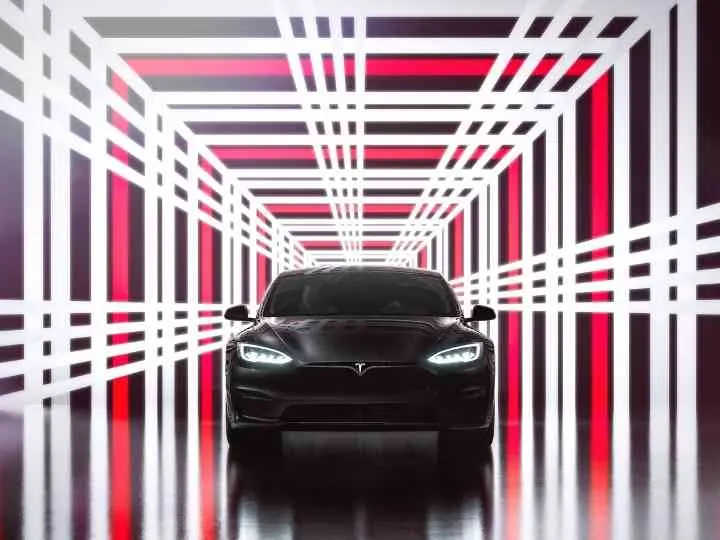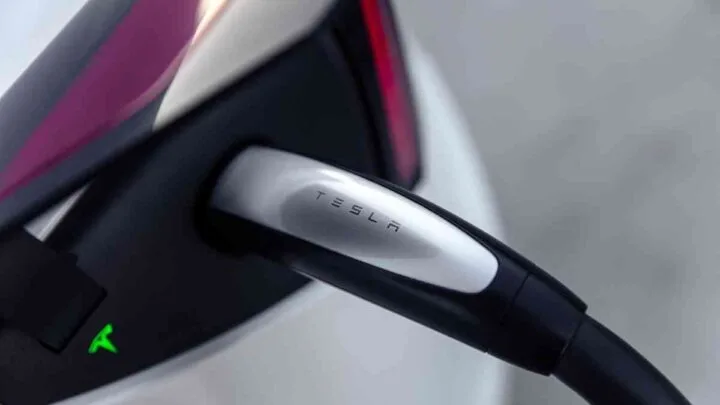If you’re tired of paying higher prices at the gas pump, you may be taking a closer look at an electric vehicle, such as a Tesla.
But since electricity isn’t cheap either, you may be curious as to how much electricity a Tesla uses and how it compares to filling up a gas tank.
An average Tesla uses just shy of 35kWh for every 100 miles you drive down the road. If you drive your Tesla 100,000 miles, this means your car will have used 35,000 kWh, which is essentially pennies per day.
Since it is not uncommon for Tesla owners to drive their vehicles 200,000 or even past 300,000 miles during their time of ownership, this means you could expect your Tesla to consume anywhere from 105,000 kWh to as much as 175,000 kWh.
How Much Power Do Teslas Need?
As electric cars have evolved over the years, the engineering used in their creation has also made great strides.
As a result, power consumption is much lower than many potential buyers realize.
In fact, you will be surprised to learn that a Tesla will consume far less power than you imagined, considering it relies on its batteries to power all of its systems.
When Tesla cars were initially designed, one of the biggest advantages they had over other electric vehicles was their battery capacity.
Well-known for being perhaps the highest of any electric vehicle sold today, Tesla battery capacity is measured using not only kWh but also mAh, which stands for milliamps per hour.
Each Tesla battery pack consists of thousands of different types of battery cells, with the majority being 18650, 4680, and 2170.
These different battery cells, when combined, feature a total storage capacity of 85-100 kWh, with the 100kWh being found primarily in larger Tesla models.
How Much Does Your Electric Bill Go Up with a Tesla?
Since you already have many other gadgets, appliances, and other things at your home which require electricity to operate, you may be thinking plugging in a car each night will send your monthly electric bill through the roof.
However, you are in for a pleasant surprise.
No matter which model Tesla you might own, the average charging cost per mile is slightly above 4.1 cents per mile.
If you were to only charge your Tesla at your home, which is very unlikely given the number of Tesla charging stations nationwide, it is estimated that the average Tesla owner would see their electric bill increase by $40-$50 per month.
As for how much it costs to charge individual Tesla models, the Model 3 comes in as the cheapest to charge, with an average of about $8.75 to be fully charged.
The Model Y is next at just over $12 for a full charge, while the Model X and Model S cost a bit more at around $16.50 to get fully charged.
Due to electricity rates varying across the country, where you live will also determine just how much your electric bill will increase.
Based on 2021 data, we have found Tesla owners who live in California and other states in and around the Pacific Northwest pay the highest rates to charge their Tesla vehicles, with electricity rates averaging 29 cents per kWh.
Tesla owners in the southern U.S. see the smallest increases in their electric bills since the cost of electricity in this region averages only 11 cents per kWh.
How Much Does the Electricity Cost to Run a Tesla?

As you’ve just read, we’ve touched quite a bit on the costs of electricity associated with running your Tesla. However, there are a few more areas to cover.
Many Tesla owners assume that they should do most of their charging at Tesla supercharger stations.
While these stations are certainly convenient and come in very handy during long trips, they are actually not designed to be used for daily long-term charging.
Since a supercharger station can get your Tesla fully charged in only 15 minutes or so, they are thought of as pit stops for your Tesla.
While you might save some money if you charged only by this method, it would prove too inconvenient over time, and you would actually use more electricity each month driving back and forth from your home and charging station.
Also, you will need to take into consideration the efficiency rates of the charger you use for your Tesla.
Many Tesla owners, especially upon purchasing their first Tesla, assume the chargers are 100% efficient, which is not the case.
In fact, most fall in the range of 85-90 percent, meaning the actual charging costs for electricity will be a bit higher!
As an example, if your Tesla contains a 100kWh battery, which would be the case in a larger model Tesla, it would cost you about 14 cents per kWh plus the 15 percent added on for charger inefficiency.
As a result, your final total to fully charge a Tesla Model S would be close to $16.50, which is still a bargain when compared to the current cost of a gallon of gas.
Since a Model S has an estimated range of 405 miles, your cost would be near $4.07 per every 100 miles you drive.
Planning Your Charging Times with a Tesla
When it’s time to charge your Tesla, you will need to plan your charging time so that your vehicle is fully-charged and ready to go when you need it.
Remember that Tesla charging is broken down into Level 1, Level 2, and the Tesla Supercharger, which is also referred to as a DC Fast Charger.
If you are using Level 1 charging, this will involve using a standard wall outlet at your home to charge your Tesla.
While providing some level of convenience, don’t plan on using this option if you need to be at work or elsewhere the next morning.
If you plug your Tesla into a standard 110-volt outlet and you have a Model 3 or other Tesla with a long-range battery nearing 100 kWh, it will take several days to get your car charged to full capacity.
Should you prefer hours rather than days to charge your Tesla, move up to Level 2 charging.
Able to be done at your home, this will have your Tesla using an amount of electricity during charging that is equivalent to the electricity needed to power one of your home’s larger appliances.
Using a 220-240 volt outlet, your Tesla will be charged to its maximum capacity in no more than 12 hours, meaning you should be good to go the next morning if you plug it in immediately after you get home in the evening.
Finally, Level 3 charging, also known as DCFC, is what takes place at a Tesla charging station.
The chargers at these stations require much more power to operate but have the advantage of providing tremendous amounts of electricity in a short period of time, resulting in your Tesla being charged in as little as 15-20 minutes.
For that 15 minutes, your Tesla can get a minimum of 200 miles of range.
Though commercial rates for electricity tend to be cheaper than residential rates, this doesn’t always mean you’ll come out way ahead in terms of costs by using a Tesla charging station.
Actually, you pay for that convenience of a quick charge!
Is It Cheaper to Charge a Tesla at Home or at a Supercharger?
Overall, it will be cheaper to charge your Tesla at home instead of relying on a supercharger station on a regular basis.
But did you know that there are some places where you can charge up for free?
As noted earlier, whatever money you may save by a quick charge will disappear quickly if you spend your time driving back and forth to get these quick charges.
Along with this, remember that although commercial electricity costs are generally lower than residential costs, supercharger stations bill customers at a higher rate per kWh.
As we said earlier, you’ll get a faster charge at a Tesla station, but you’ll pay more for the convenience.
Overall, it will cost you between $10-$15 to get your Tesla charged to full capacity at your home.
Also keep in mind that when you use a supercharger station, a large amount of high-voltage electricity is being transferred to your car’s battery in a short period of time.
While this is good in that it gets you back on the road quickly, it can actually damage your Tesla battery if you do this on a regular basis.
Can I Save Money on Charging by Using Solar Power?
Should you be seeking ways to lower the charging costs associated with your Tesla, one of the most popular options for many people is converting their homes to solar power.
Should you have all of your home or even part of it using solar energy, you could see a substantial drop in your Tesla charging costs.
Though you would spend money upfront for the energy conversion, the average cost per kWh of electricity drops to 10 cents with solar power.
In addition, there are often many tax credits, rebates, and other incentives offered by state and federal agencies to homeowners who convert to solar power, which could save you even more money as the years go by.
Should you plan on keeping your Tesla for at least a decade and have no plans to turn away from electric vehicles in the years ahead, converting to solar power may be a smart decision.
Do I Need to Charge My Tesla Every Day?
In most cases, you will not need to charge your Tesla each day. Of course, this can vary, especially if you drive hundreds of miles per day.
For most Tesla owners, plugging in their car each night eventually shortens the lifespan of the car’s battery.
Therefore, you’ll save money on electricity and keep your car’s battery pack in good shape if you only charge as needed.
Since there is no doubt electric vehicles such as Tesla are the wave of the future, doing all you can now to cut the costs of your electric bill when charging your Tesla will pay big dividends.
